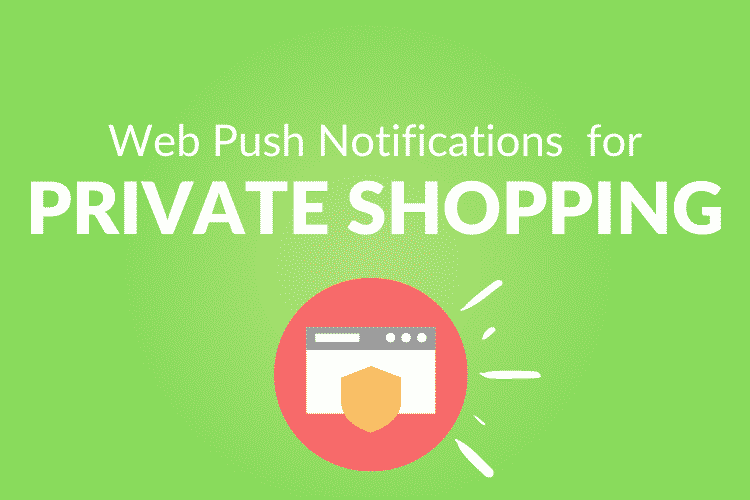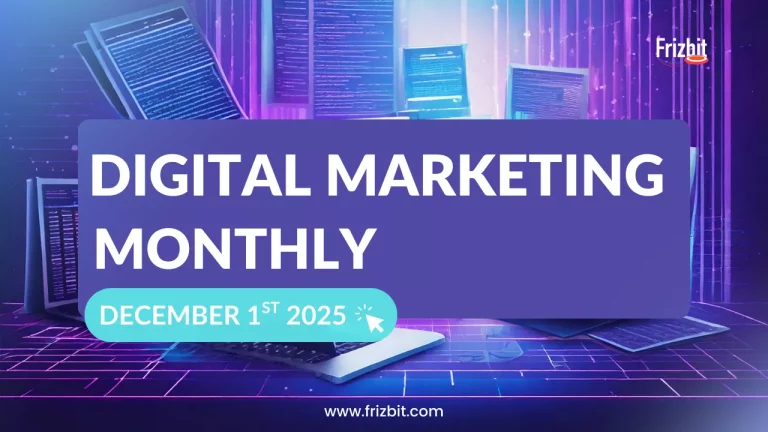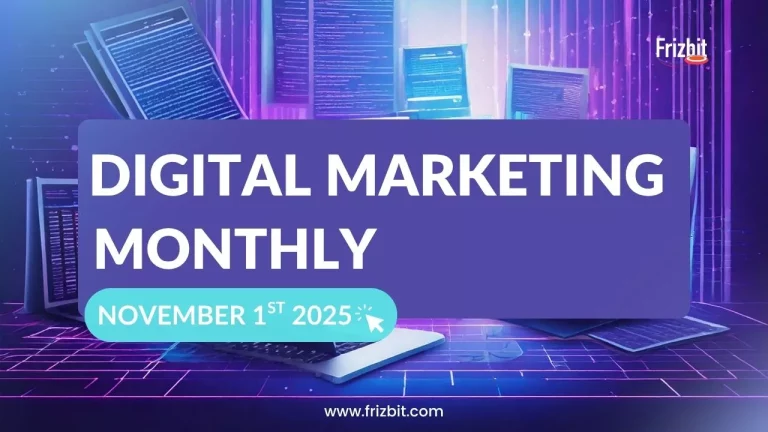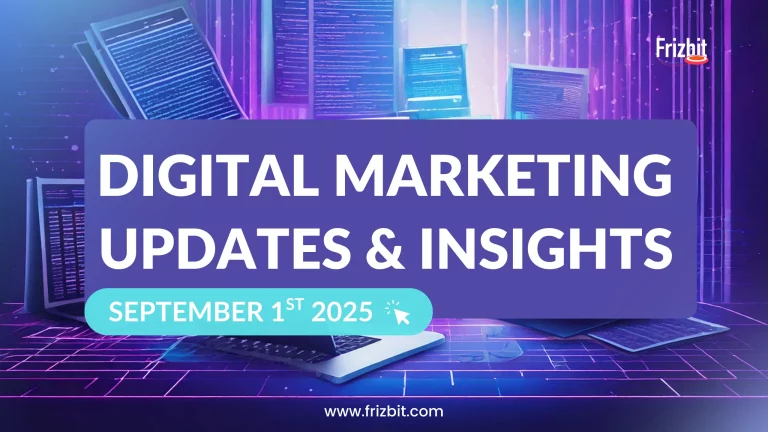Over the past years ecommerce and online shopping have become essential for any retail brand. Not only because of the exponential growth of Internet interactions, but more specifically due to Covid-19 pandemic during 2020-2021.
The number of digital buyers keeps increasing every year, making it indispensable for businesses to have an online selling presence: “In 2020, over two billion people purchased goods or services online, and during the same year, e-retail sales surpassed 4.2 trillion U.S. dollars worldwide.” . Statista
While most brands choose the road of traditional e-commerce, others bet for exclusivity with private shopping sites.
What are Private Shopping Sites?
Private shopping sites are e-commerce websites that offer very high discounts for short periods of time, and users must register to access them. These private sales last for a limited period of time, that’s usually between 2 to 6 days. People are required to become members by leaving their email address to buy, and in some cases even to gain access to see the sales.
These sites normally buy the excess stock and merchandise directly from brands and designers to sell them at a much lower price. Private shopping e-commerce thrives on the premise of exclusivity, making it attractive for both consumers, who get amazing deals, and brands who rather sell their products here than in discount stores.
Some examples of popular private shopping sites in Europe are:
The marketing strategy focuses on getting people’s emails addresses to later send emails every time there’s a new sale or one is close to ending. This model works based on the sense of urgency created by the limited time duration of each offer.
Even though private shopping has always focused their marketing efforts in emails, a combination of manual and automated web push notifications open a world of possibilities worth examining.
How to use web push notifications for private shopping
Web push notifications are a new digital marketing channel that allows sites to connect with users with personalised messages without requiring email or phone number. Let’s talk more in detail about web push notifications strategies for private shopping:
1. Welcome web push notifications
When users first visit a site that has enabled web push notifications, they will receive a prompt asking them if they want to Allow or Block them. Once they accept them, the first notification that’s usually delivered is a welcome message. For private shopping sites there are two scenarios:
a) Web push notification to get more email subscriber: Users that visit the site for the first time but don’t register with their email address (non-registered users)
This is the first scenario in which visitors accept the web push notifications, but don’t become members of the site by sharing their emails. For this case you can send a first push notification asking them to join the shopping club and become a member by signing up so they don’t miss any special sale.
For this specific case it’s recommended to automate a sequence of notifications to be sent:
- 5 seconds after the opt-in,
- 1 day after the opt-in,
- 1 week after the opt-in,
IF the subscribers still hasn’t registered
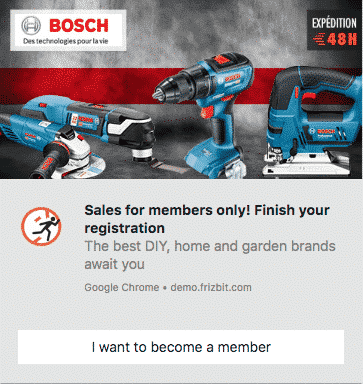
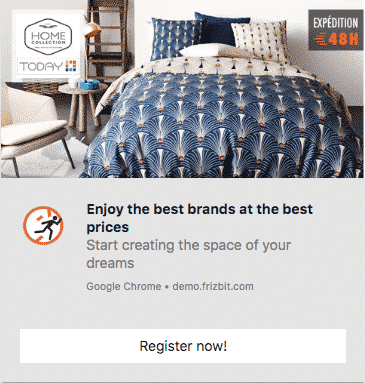
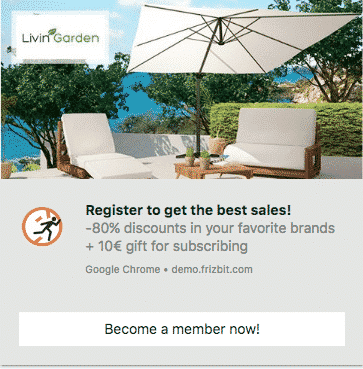
b) Web push notifications to generate additional visits: Users that visit the site and sign up with their email address (registered users)
The second scenario focuses on visitors that accept web push notifications and also complete a registration with their email address to become members. In this case, you can send a “welcome” web push notification inviting them to check out the special sales of the week. This message it’s usually sent 5 seconds after the opt-in.
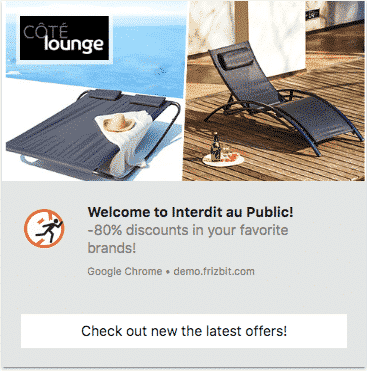
2. Announce new offers via manual web push notifications to generate new leads
With manual web push notifications you can send bulk messages to all subscribers announcing new sales or communicating any type of information you think might be interesting and useful. They have the same objective as email newsletter but with added perks only web push notifications have like:
- Instant traffic generation
- Reach both email registered and non-registered users
a) Non-registered users: users that didn’t register with their email address, won’t have any means of learning about new sales unless they visit the web regularly. If you send them manual web push notifications informing about new offers that might attract them, you can get them back to your site and convert them into leads.
b) Registered users: by reaching out to users that registered with their email address, you can generate instant visits to your website. Web push notifications appear instantly on users’ screen as soon as they open their browsers which means you don’t have to count on people checking their inbox to learn about new sales and going back to your site.
3. Web push notifications for offer retargeting
This channel allows the creation of scenarios that trigger a message based on user behaviour. Private shopping sites can define a scenario that automatically sends a notification when a user expresses interest in an offer by clicking on it.
In this case, if a subscriber accesses a sale, but leaves the site without visiting a product page or going through with a purchase, he/she will receive a notification as a reminder of the offer and the time left until it finishes.
Private shopping sites can exploit the sense of urgency of the sales by creating a web push notification that makes reference to how much time is left and bring subscribers back as soon as possible.
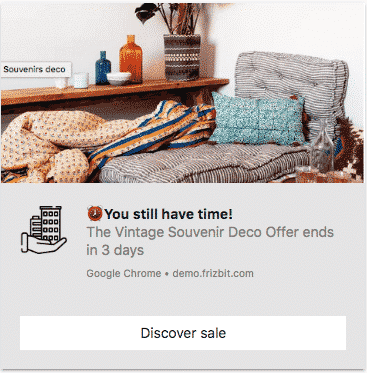
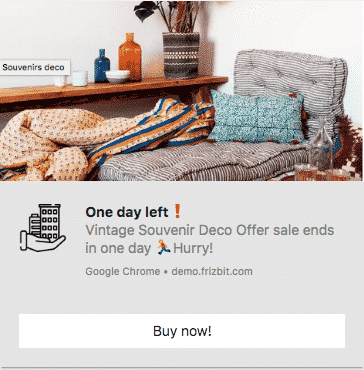

Note that you can design automated web push notifications sequences for every event that users complete on the site, just like we explained earlier in the scenario of a channel destined to gain more email subscribers.
This means you can set up a flow of messages for this specific event. You can send one first notification 1 hour after a user clicked on an offer and left the site, another 1 day after and a final one 3 days later.
4. Web push notifications for product retargeting
Continuing with the flow of messages following users’ journeys on the site, you can create another sequence to connect with all those who visit a Product Page, but leave without completing a purchase. The sequence would look something like this:
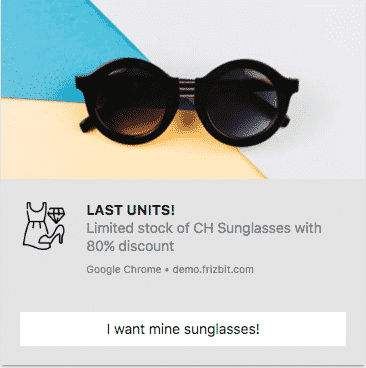
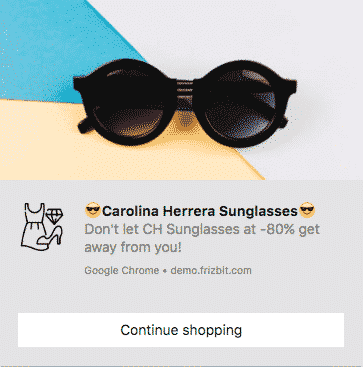
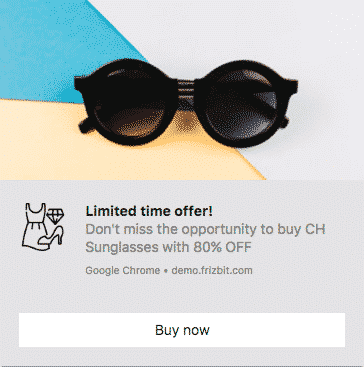
You can define the timing of these notifications as you wish. However, based on the results of our clients, we recommend a frequency of:
- The first notification to be sent 1 hour after, IF the user visits the Product Page, THEN leaves without adding to cart.
- The second notification to be sent 1 day after, IF the user visits the Product Page, THEN leaves without adding to cart, OR doesn’t click notification #1.
- The third notification to be sent 3 days after, IF the user visits the Product Page, THEN leaves without adding to cart, OR doesn’t click notification #2.
Automated product retargeting web push notifications are a great strategy to maintain communication going and keep the brand on people’s top of mind.
5. Web push notifications for cart abandonment recovery
The last step a user takes before purchasing is adding the product to their cart, and the online retail sector has an average of 84.51 percent shopping cart abandonment rate. Which means that it is imperative for online stores to have some sort of strategy in place to tackle this issue.
There are a trillion techniques out there specifically designed for cart abandonment recovery. Web push notifications have proven their worth as very effective channel to do so and are in the running with SMS and cart abandonment emails with one huge advantage:
Web push notifications don’t require users to share personal information such as their email or phone number
For this last step of the user journey you can create a sequence of messages with the objective to reach subscribers and bring them back to the website to finish the purchase of a product they added to their cart and forgot about:
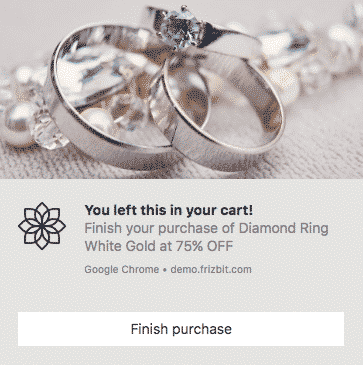
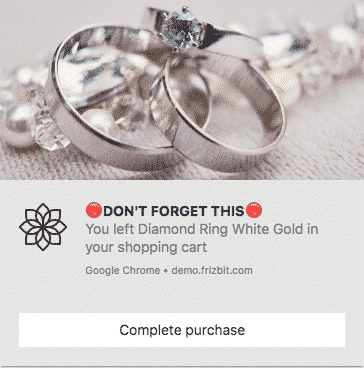
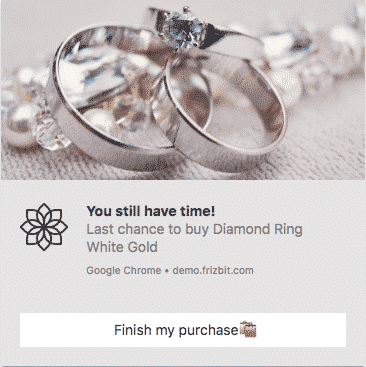
6. Web push notifications for post-purchase reminders
One of the main advantages of private shopping sites is the frequency they are updated. These types of sites have new products and new sales every week which opens the door to a more consistent communication with customers.
Even though the previous sequences are the recommended ones for any ecommerce website, it is possible to create as many automated notifications sequences as wanted. However, in the case of private shopping we do recommend adding one additional flow given the fact of how frequently the content is updated: Purchase Reminder Notifications.
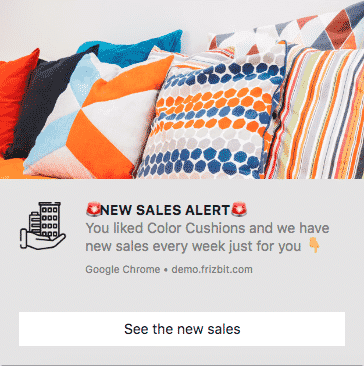
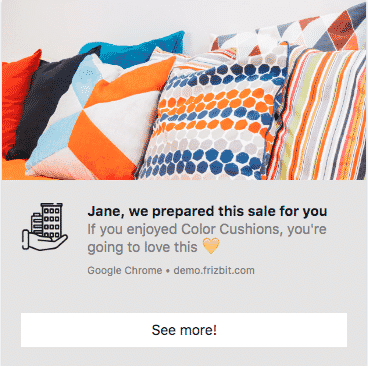
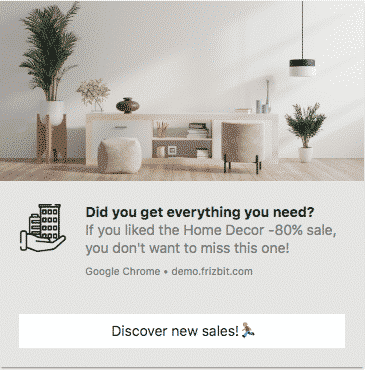
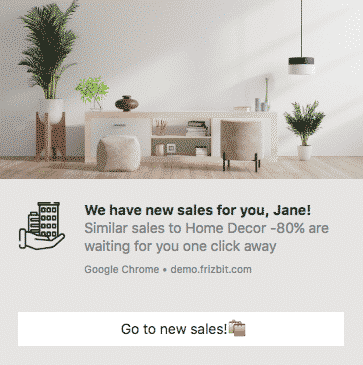
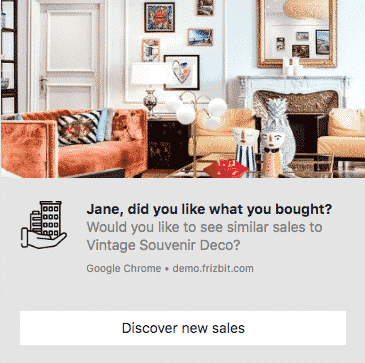
For this sequence you can also define a waiting time to send that suits your strategy in the best possible way. The timings we suggest are:
- Post-purchase reminder #1:14 days
- Post-purchase reminder #2: 28 days
- Post-purchase reminder #3: 60 days
Remember that retaining customers is far more profitable than acquiring new ones. That’s why it is so important to design a special strategy that focuses on reaching out to customers that have already purchased, encouraging them to repeat.
Final thoughts
Private shopping sites are becoming more and more popular and it’s easy to stumble into one when searching to buy big brands at low costs. The communication strategy for these online stores focuses on continuous communication with users through email to share weekly updates regarding new sales.
By default email has always been the one and only channel that has shown to adapt the business model of private shopping sites. But not anymore. There’s a new channel that’s here to stay and become the perfect match for online private sales: web push notifications.
They present a world of possibilities to engage with customers through their entire shopping journey. With a specific sequence for every stage of the marketing funnel, web push notifications offer private sales websites the opportunity to connect with customers in real time, with hyper-personalised messages in both desktop and mobile.
No other channel can do this. If you work with any type of private shopping site and, so far, you have based your digital marketing strategy around email, take us up on this one and dive into the web push notifications world. You won’t regret it.
If you need further reasons, make sure you also read:
